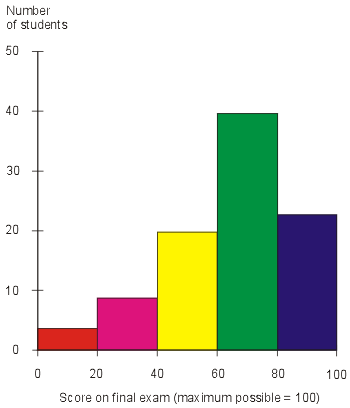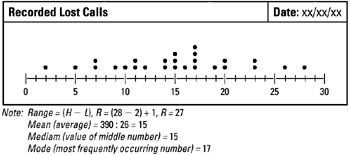My Journey Begins...@SST
Tuesday, December 20, 2011
Friday, July 29, 2011
Algebra Puzzles - Solutions and explanations :D
3 x 3 Grid Puzzles
My solution:
3 drums = 15
1 drum = 15÷3 = 5
Therefore, drum = 5
1 drum + 2 presents = 31
5 + 2 presents = 31
2 presents = 31-5 = 26
1 present = 26 ÷ 2 = 13
Therefore, present = 13
2 presents + 1 star = 45
26 + 1 star = 45
1 star = 45 - 26 = 19
Therefore, star = 19
My solution:
3 drums = 15
1 drum = 15÷3 = 5
Therefore, drum = 5
1 drum + 2 presents = 31
5 + 2 presents = 31
2 presents = 31-5 = 26
1 present = 26 ÷ 2 = 13
Therefore, present = 13
2 presents + 1 star = 45
26 + 1 star = 45
1 star = 45 - 26 = 19
Therefore, star = 19
Wednesday, June 29, 2011
Saturday, May 14, 2011
Maths Performance Task - Personal Reflection
(I) Role of Statistics in Real Life
Statistics, simply put, is a collection of data, and normally it collects mass amount of data. Statistics can cover almost anything, whether its finding the number of children each family have in a housing estate, or finding the operating expenditure of a company. Statistics also involves organising,analysing,interpreting and presenting the data collected.
There are mainly two types of data that is collected: -
1) "Hard" Data
This data is more of quantitative than qualitative.
2) "Soft" Data
This data is more of qualitative than quantitative.
There are also many types of ways to present the data, let us go through some of them: -
1) Bar graphs : This type of graphs is one of the most common type. It is used to compare various things in amount. You can already see this kind of graphs in your Primary School Mathematics Paper.
 |
| http://illuminations.nctm.org/Lessons/ConnectingCubes/SampleBarGraph.jpg |
An Example of a Bar Graph. Looks familiar?
2) Line Graphs : This is used to compare a thing is used over time. This is also another graph that you will see commonly. It shows changes, normally over time.
 |
| http://www.awe.asn.au/branches/sunshine-coast/images/commom_line_graph.jpg |
An Example of a Line Graph. Another common graph.
3) Pictogram : Represented using pictures. Used for comparing things (just like Bar Graphs). I always thought that this is one of the most interesting graphs as there are pictures to look at, unlike other graphs, which looked boring.
 |
| http://math.youngzones.org/pictograph.gif |
An Example of an Pictogram. The interesting one.
4) Pie Charts: One distinct feature of these charts are that they are shaped in a circle. Also, the information is represented in percentage(%) and can also be expressed in an angle or fraction. We can compare the quantity based on the size of the sector or ‘slice’ of the chart. Normally, each sector of the chart is in a different colour from the others so as to concretely differentiate each sector.
5) Histograms: It is similar to Bar Graphs, however it is used to present mainly Frequency. The vertical axis must be label as ‘Frequency’ and the horizontal axis is usually the quantity. This kind of graphs can only show one type of information and the bars are always vertical. Most of the time, the bars are of equal width. This is normally taught in Secondary School.
 |
| http://media.techtarget.com/digitalguide/images/Misc/iw_histogram.gif |
An Example of a Histogram
6) Frequency Table : Sometimes, a frequency table is used. It has the similar uses as the Histogram, which is telling frequencies. It is actually an organised version of the raw data for better viewing and understanding. You may seen this anywhere.
 |
| http://ckight.wikispaces.com/file/view/frequency_table.gif/164708447/frequency_table.gif An Example of a Frequency Table |
Here are also some graphs that will be taught in detail in the future : -
1) Dot Diagrams : A diagram represented by dots. However, one distinct part is that these graphs do not have a vertical axis. It is somewhat similar to Pictograms, just that the pictures are replaced with dots.
2) Stem-and-Leaf Diagrams : A diagram that is rather unique and 'rare' (meaning that it is lesser seen). It is also quite a chore to read it too. However, it is pretty useful if you want to find the mean,median and mode, as the numbers are listed in ascending order.
1) Dot Diagrams : A diagram represented by dots. However, one distinct part is that these graphs do not have a vertical axis. It is somewhat similar to Pictograms, just that the pictures are replaced with dots.
 |
| http://flylib.com/books/2/890/1/html/2/images/figu190_1.jpg An Example of a Dot Diagram. |
 |
| http://www.bbc.co.uk/schools/ks3bitesize/maths/images/stem_leaf1.gif |
An Example of a Stem-and-Leaf Diagram.
(Instructions on reading the diagram is in the picture too.)
Since statistics are used widely in the world, where can we find them? and how can they help us? Here are some places where you can find statistics in ACTION:-
1) The Bills(mainly paid by your parents)
See some bills lying around in your house? There are traces of statistics there! For Water and Electricity Bills, turn to the back and you will see some Bar Graphs there. Those are the representations of the usage of electricity or water used in your house! Watch carefully so that you do not overspend those precious resources!
 |
| My house's Water and Electricity Bills. Looks like my family overspent some resources! |
Seen the weather forecasting and how the screen of the weather forecast changes behind the forecaster? It is the results of their data collection, presented in a neat and understandable chart or table.
 |
| http://newsimg.bbc.co.uk/media/images/41148000/jpg/_41148618_weather_bbc_416.jpg A Weather Forecast for the day. |
 |
| http://ant.sillydog.org/blog/pic/weather_apple_store_open_080615.jpg |
Another Way of presenting the data.
An example of an report of a company
3) Investments (Business)
Investments is serious business, so people will like to find out more about the product/service they are investing. Companies will provide these investors a fair bit of information about them or otherwise their track-record. Their track-record is obtained by statistics, which their raw data was analyzed and organised. These records will conclude whether the investors decide to invest on the company.
 |
| http://www.randgoldresources.com/randgold/content/en/page5263 |
 |
| http://rupeeblog.files.wordpress.com/2009/06/asian-paints-07-08-annual-report-cover1.jpg |
Reports can be also found in Annual Reports of the company too.
A graphical representation of the recent earthquakes happening in the world
Statistics is EVERYWHERE. No doubt they are in newspaper articles, but how are they being used? Let's take a look:
| http://1.bp.blogspot.com/-gmv1q1mBbC0/TY9FzJrM2gI/AAAAAAAABrM/vMYsgMoIaz4/s1600/IMG_9364.JPG |
 |
| Taken From: Mathematics in Real Life (Facebook) |
A graphical representation of the movement of Singapore's reserves
(II) Learning Experience
We mainly split ourselves into two small groups, Gladys and Qian Hui being in the West Zone team while Lovy and me being in the North Zone team. Then, in our small teams, we went to find out the neighbourhoods and bus services. Then, we picked out the information and put them in the Google Spreadsheet and analyzed and made conclusions. After that, we come together and started on our poster.
I think some strengths of my group is that we are actually very on-task as we finished our work on time. My group is also very cooperative as everyone is able to work together in harmony. My group is also very focused on the task, so we were able to finished our poster faster.
My roles were doing up the charts with the help of Lovy and making the poster with all the other group members. As my Macbook was appointed to make the poster, I managed to follow the layout that Gladys and Qian Hui designed and successfully finished making our poster, and of course, with the help of Gladys' editing.
Some of the challenges I faced was that the raw data given was not very accurate. The numbers are not in synchronization and some data was not filled up. I had to change the bus services several times in order to get a bus service that has the full data.
One thing I will do differently is that I will like to personally collect the raw data with my group so that we know the accuracy of the data is quite high. Another thing I will do differently is that the group will hold one or two meetings together to improve on our poster or double-check our data. Unfortunately, we did not do so because of the short duration that is given.
Resources : Mathematics in Real Life (Facebook Group)
Various Sources from Google.com
Math Textbook
Resources : Mathematics in Real Life (Facebook Group)
Various Sources from Google.com
Math Textbook
Monday, April 25, 2011
Refections_CE
I had learnt:
1) Everyone has differences and each is special in his/her own way.
2) We are in a place where there are lots of differences and embracing the differences is important for peace.
3) People may still have similarities.
I enjoyed:
1) The activities.
2) The talk(?)
I think that difference in people is also beneficial for us as the world will not be so boring and uninteresting.
1) Everyone has differences and each is special in his/her own way.
2) We are in a place where there are lots of differences and embracing the differences is important for peace.
3) People may still have similarities.
I enjoyed:
1) The activities.
2) The talk(?)
I think that difference in people is also beneficial for us as the world will not be so boring and uninteresting.
Tuesday, February 15, 2011
Chap 2: Real Numbers - Rational Numbers
I don't agree what Janice said. This is because not every fraction in the same 'family' is a recurring decimal. As 6/6,3/6 are not recurring decimals. EVIDENCE: [You can see a pattern : 2 recurring decimals then 1 terminating decimal]
Saturday, February 12, 2011
CNY Hamper Reflections.
We are helping the elderly for the Chinese New Year. We had done a Chinese New Year hamper containing the things we bought that we think it will be helpful to the elderly.
We are making them feel that they are not neglected in the Chinese New Year season,so they will feel the warmth and care by people in the Chinese New Year just like us.
We could visit them and keep them company. We can also help them with some of the chores so that the people there are not to busy and can talk to the elderly there.
We are making them feel that they are not neglected in the Chinese New Year season,so they will feel the warmth and care by people in the Chinese New Year just like us.
We could visit them and keep them company. We can also help them with some of the chores so that the people there are not to busy and can talk to the elderly there.
Thursday, February 10, 2011
Maths: Activity 3- Let's examine the Patterns!
2.
(a) A positive number multiplied by another positive number gives a positive answer.
(b) A negative number multiplied by another negative number gives a positive answer.
(c) A positive number multiplied by a negative number gives a negative answer.
(d) A negative number multiplied by a positive number gives a negative answer.
3.
- (+) x (+) = (+)
- (-) x (-) = (+)
- (+) x (-) =(-)
- (-) x (+) = (-)
- (+) / (+) = (+)
- (-) / (-) = (+)
- (+) / (-) = (-)
- (-) / (+) = (-)
Thursday, January 20, 2011
"maths" and "numbers"
I actually agree. As 2 is a number that makes out more numbers. 2 has created 4 by multiplying itself by two,more numbers are made using this method.
Subscribe to:
Posts (Atom)








